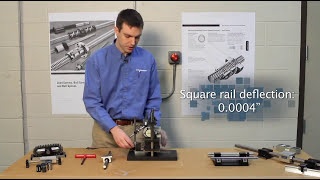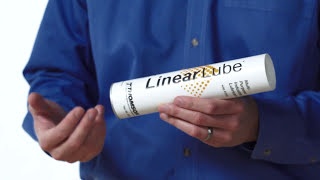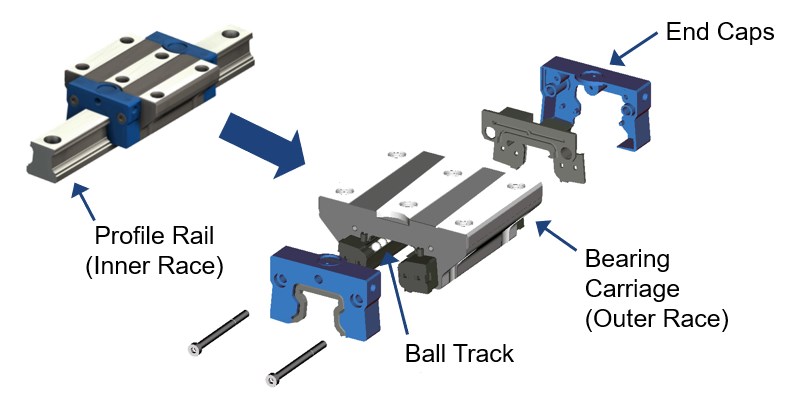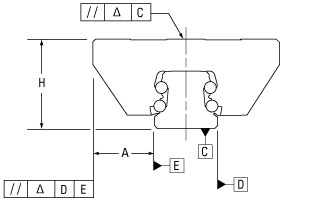Linear Guide Rails
When precise linear motion is required for an application – whether it’s retrofit into an existing system or designed into a new one – Thomson linear guide rails and carriage assemblies are an optimal choice.
What sets a Thomson linear guide rails apart?
The complete offering of Thomson profile rail linear guide rails and carriage assemblies includes a broad range of styles, sizes and unique features produced to industry standard dimensions.
The Thomson linear guide rail assortment consists of:
500 Series Roller Linear Guide Rails
Rigidity is achieved by using the equivalent of a back-to-back bearing arrangement, complemented by special rollers that are crowned to prevent roller edge loading when misalignment is present. This results in lower elastic deformation as the load increases compared to a ball carriage or face-to-face bearing arrangement. A ball provides a single point contact area, while a roller provides a much greater line contact area. This results in a substantially higher load carrying capacity and lower wear with minimum rolling friction.
500 Series Ball Linear Guide Rails
These guide rails are produced from high-quality bearing steel. Almost all carriages, rails and rolling elements are through hardened. The end cap is constructed of a high-strength, glass-filled nylon with nitrile rubber seal.
400 Series Profile Rail Linear Guides
These guide rails are an ideal solution for cost-sensitive applications and is designed as a drop-in replacement with industry standard envelope and hole patterns. Caged and non-caged carriages utilize the same rail design, enabling efficient use of inventory since only one rail type needs to be stocked for either carriage type.
MicroGuide® Linear Guides
This stainless steel miniature guidance system provides corrosion resistance in certain clean room and washdown applications. MicroGuide's two-track Gothic arch ball groove geometry enables single rail application. It is also ideal for small design envelope requirements in semiconductor processing equipment and medical diagnostic equipment.
T-Series Linear Guides
A lightweight, flexible and more compliant alternative to all-steel profile rail, this high-quality product is made from aircraft aluminum alloy with hardened-steel, load-bearing plates and ball paths, and is an ideal choice for applications requiring reduced weight inertia. This aluminum guidance system uses hardened steel inserts in carriages and rail to provide a low-weight solution for critical, high-performance applications.
Square vs. Round: Which Linear Guide Rails are Best for Your Application?
When specifying linear guides for your applications, there are two types of guide rails from which to choose: square (profile) and round (shafting). Your application will dictate which types of linear guide rails should be used.
Square guide rails are well suited to high-load applications that require good rigidity and high accuracy. These linear guide rails achieve their performance through the precise grinding of the ball tracks in the rail, which have close conformity to the balls. The classic application for profile rail bearings is in the machine tool industry, where load capacity, rigidity and accuracy are paramount. Round guide rails offers several advantages of its own, including the ability to run smoothly when mounted to less-than-perfect surfaces or used for vertical movements with heavy loads.
For a more detailed analysis of choosing square or round linear guide rails, click here.





